Seville city guide: Where to eat, drink, shop and stay in Spain’s southern cultural capital
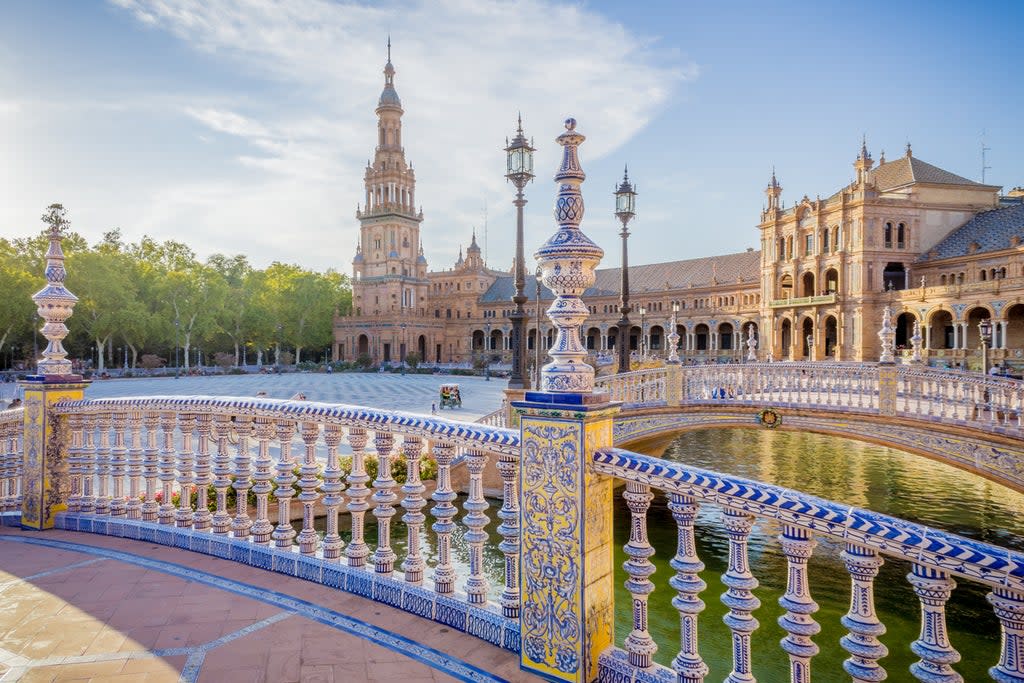
A more compact and characterful alternative to the more obvious Spanish city break favourites, the mild Andalucian capital is also the ideal hideaway from deepest winter gloom.
With an average of 3,000 sunshine hours each year - and the accolade of the warmest city in continental Europe - Seville tempts sun-starved Brits to its winding, orange-tree-lined streets and sunkissed roofs and plazas.
As the birthplace of flamenco dancing, a firm favourite on the foodie hit list, and home to so much Gothic architecture that it has inspired screen favourites such as Game of Thrones, this is a Spanish city with plenty of colour and texture.
What to do
Stroll a photogenic square
Built on the edge of the Maria Luisa Park, Plaza de Espana is where the influencers come to snap selfies, thanks to its elegant sprawl of ornate bridges, towers and arches, complete with gorgeous fountain.
If you’ve been to Madrid before, you might recognise the Retiro Park-style rowboats and regal buildings – but the palatial Gothic buildings are also adorned with cute, colourful tiles, giving both Barcelona and Lisbon vibes. As you wander, check out the ceramic benches dotted around the plaza, too – each represents a Spanish province.
Climb Las Setas
Also known as the Metropol Parasol or the Mushrooms of the Incarnation, Las Setas looks like an overgrown, kitschy marquee with a honeycomb roof. It’s one of the only modern buildings in the city’s centre – climb the steps to the viewing point for seriously stunning views, which can be followed by tapas in the onsite restaurant.
There’s also an archaeological museum on the basement floor of Las Setas (the Info Antiquarium; €2 adults), if that’s your kind of thing.
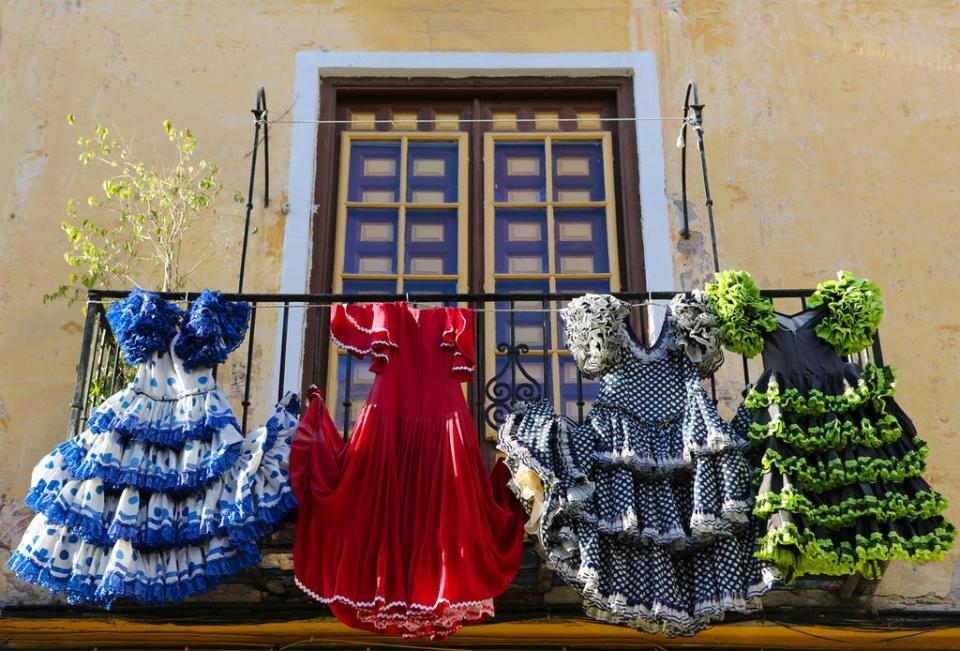
Watch a flamenco show
This is the birthplace of flamenco; it’d be rude not to take in a show. For something intimate, book tickets for Casa de la Memoria (€21 per person), a bijou venue just off a side street filled with tapas bars. For a larger, more raucous performance, try Casa del Flamenco (€20 per person) in the former Jewish quarter, Santa Cruz. Shows are delivered in Spanish, but the passion and dance moves transcend language.
Bathe in Spanish wine
Less traditional but just as stimulating is a soak at Aire Ancient Baths, also in Santa Cruz. Access is through an alleyway – blink and you’ll miss it. Here you’ll take a dip in subterranean baths infused with azahar, an essential oil created from Seville’s bitter orange blossoms - or opt for the “wine bathing” experience (€130 per person) to wallow in antioxidant pools of Ribera del Duero wine. While Aire spas have gone international, it all started within the Mudejar-style walls and shaded Andaluz courtyards of Seville, so it’s worth a mellow afternoon of your trip.
Paddle down the Guadalquivir river
If you’re feeling adventurous, rent a kayak or paddleboard (or book a tour for €30) and navigate the local waterway, the Guadalquivir. Passing the Triana Bridge, the Plaza de Toros – the most famous bullfighting arena in the world – and skimming along to ancient military watchtower Torre del Oro and back is a divine route.
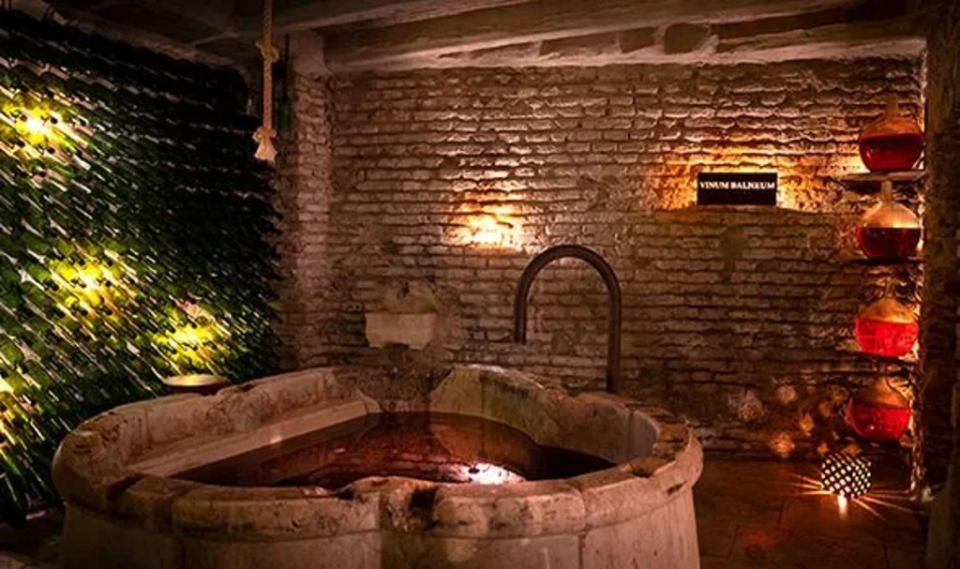
Where to stay
Despite having snazzy facilities such as a rooftop pool and terrace, and based in a top location for food and sightseeing, Hotel Don Paco is considerably cheaper than other hotels of its level. Its sunset views across the Old Town are spectacular, and it’s only a five-minute walk into the city centre. Doubles from €89, room only. hoteldonpaco.com
For dreamy boutique hotel feels, try Hotel Dona Maria, an elegant 14th-century casa with a plush pool area and terrace with views of the cathedral. Even if you’re not staying, it’s worth popping into the chic bar with its mossy living wall for a drink. Doubles from £89, room only. hdmaria.com
Hostal Sierpes sits inside a renovated old mansion palace, where wicker furniture occupies a leafy courtyard and rooms are warmed up by traditional ceramics and antiques. Doubles from €55, room only. hostal-sierpes.sevillehotels.net
For Seville on a shoestring, check into the eco-slanted Nomad Hostel for free tours and courtyard breakfasts. From €20 for a bunk in a 10-bed dorm. thenomadhostel.com
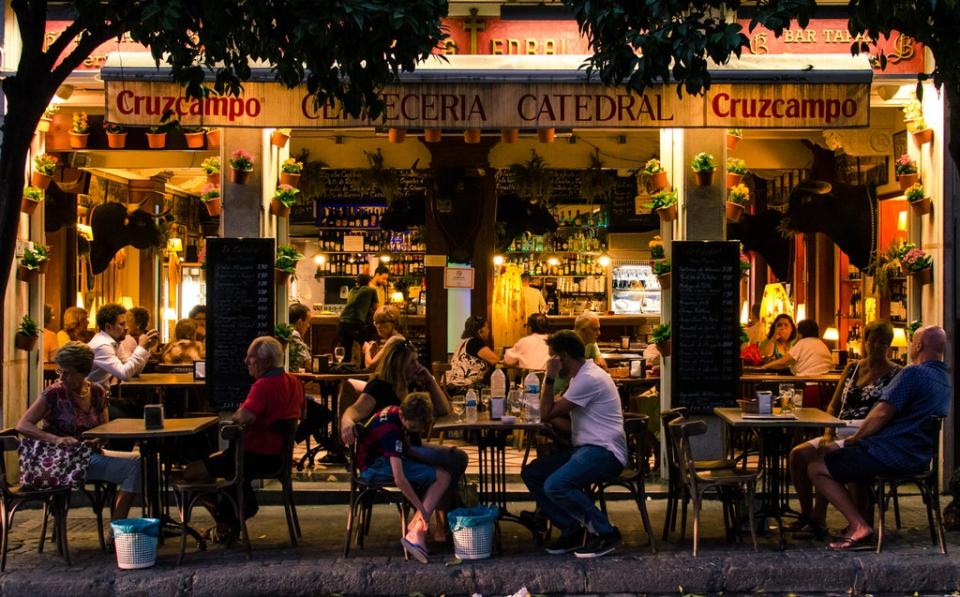
Where to eat
Seville is blessed with hundreds of tiny finds, be they charming bakeries or tapas places humming with local chatter. Be sure to sample a range of bodega-style hole in the walls as well as a couple of the more modern-chic haunts – and don’t flaunt your tourist status by heading out for your evening meal before 9pm.
Brunch
Eat breakfast like the Spanish with a tostada, complete with oil, tomato, or marmalade made with bitter Seville oranges. Try Almazen Cafe for an interesting cross of Spanish and Indonesian-inspired brunch – think smoothie bowls with chia seeds and muesli.
La Mala Brunch’s huge menu includes the Sevilla bagel, with salmon, avocado, tomato and poached egg.
One unmissable Seville breakfast is churros dipped in chocolate: available in most cafes, particularly on the Calle Larana in the city centre.
Lunch and tapas
Book an outside table at farmhouse restaurant Gusto for delicious paella, decadent iced coffee and an even more satisfying people-watching session. There are fabulous tapas places all over, but Bar Agustin & Co offers a winning food and wine menu, with cool sepia interiors.
Dinner
For your treat night, eat your fill at Casa Ozama, a converted modernist villa. Order the smoky, rum-based sangria and sample seafood dishes including grilled tuna. If you’re unsure where else to go, stroll down the Calle Canteros (a charming, winding road of tapas joints a stone’s throw from the cathedral) to inspire the taste buds.
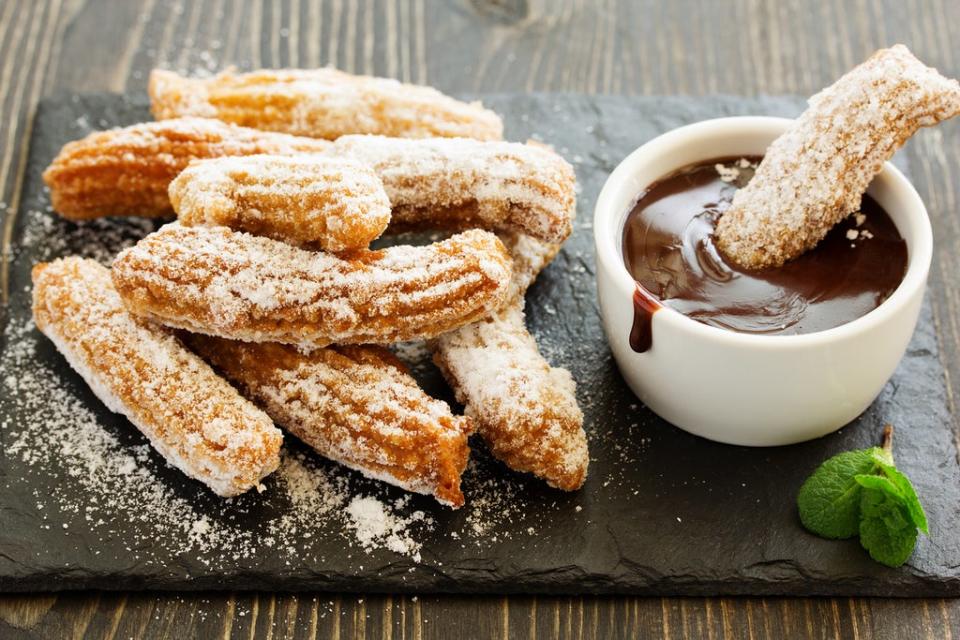
Where to drink
Seville has a buzzing (pun intended) evening coffee culture – how else can you get going again after that afternoon-long siesta? Virgin Coffee (Calle Regina 1) is a small-scale java joint with a huge fanbase, thanks to its family-run charm and onsite roastery. It’s tiny, though, so order takeaway and enjoy it on the steps of nearby Las Setas. Or to matchmake your coffee with a pastry, try hip Mediterranean cafe Panypiu, which serves caffeinated delights until 9pm.
The rooftop terrace of hotel and bar The Corner House looks out over one of the city’s trendiest squares, Alameda de Hercules. The bartenders are adventurous, and if you’re feeling it too, ask for a drop of Miura – a cherry liqueur named after the Spanish fighting bull – in your champagne.
For aperitivo hour al fresco, don’t miss the Premier Garden Cocktail Bar (Kiosco Parque, 41004 Prado de San Sebastian) – almost next to the Plaza de Espana – for a drink tucked under the park’s leafy trees.
Where to shop
If you are hankering after the city’s flamenco get-up, head to the Alfafa neighbourhood to peruse its dresses, as fanned-out and frilly as a forest of tropical birds. Try out Flamenco Y Mas or Lina 1960, which also does bridalwear.
Calle Sierpes houses all the international shopping brands, from L’Occitane to Zara and Mango. But if you’re after more authentic Spanish high street fare, try Avenue de Menendez Pelayo in the north of the city, which is lined with less touristy, more locally minded shops for vivid print dresses and accessories.
Hit up Mercadillo del Duque la Magdalena (Plaza del Duque) for leather handbags, or arts and crafts market Paseo de Arte for artisan pottery and jewellery.
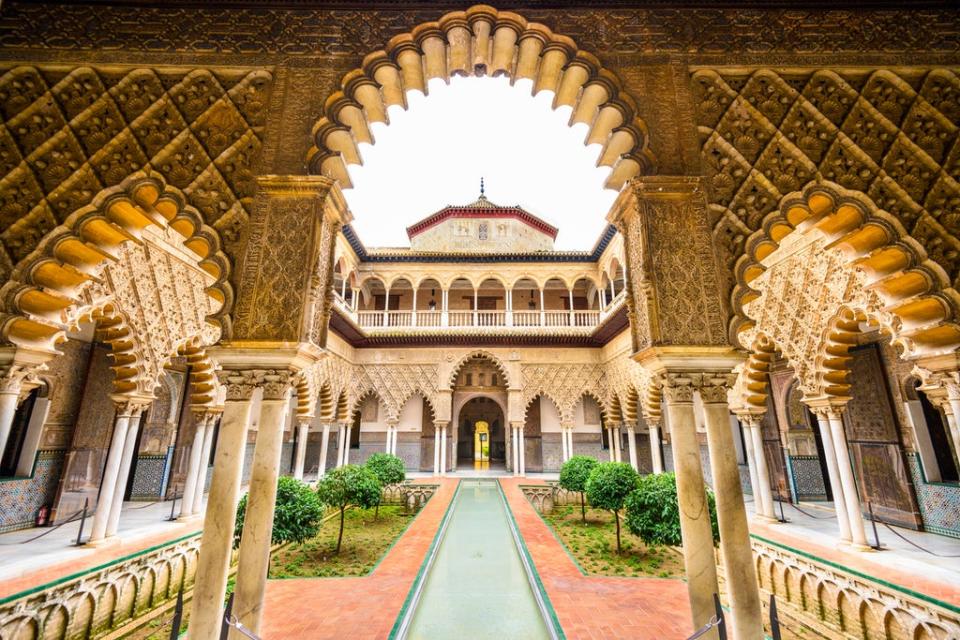
Architectural highlight
The Real Alcazar’s palatial buildings are rendered in the Mudejar style, created by the Moor population when they dreamt up this fortress in the 11th century. Nowadays, it inspires Game of Thrones location scouts and fashion-shoot stylists alike – on a crisp winter or spring day, order a cafe con leche from the cafeteria in the gardens, settle on a ceramic-tiled bench and take in the serene setting. But the entirety of Seville’s beautifully preserved old town is a highlight.
Nuts and bolts
What currency do I need?
Euros.
What language do they speak?
Spanish.
Should I tip?
Tipping is optional, but rounding to the nearest euro is fine if you see fit. Leaving 5 per cent in change is considered generous.
What’s the time difference?
One hour ahead, Central European Time.
How should I get around?
There’s a great tram and metro system, but it’s very easy to navigate by foot.
What’s the best view?
From the panoramic terrace of the Metropol Parasol.
Insider tips?
You can nab free tickets to the Real Alcazar on a Monday – but be sure to bag a slot online in advance as they book up quickly.
Getting there
Trying to fly less?
You can get from the UK to Seville entirely by train – take the Eurostar to Paris, the TGV train from Gare de Lyon to Barcelona Sants, and then the high-speed train onward to Seville Santa Justa.
Fine with flying?
Airlines including Ryanair and easyJet have direct flights to Seville’s San Pablo Airport.
Read More
Spanish police hunt for tourists who escaped quarantine
Where to stay, eat, drink and shop in Stavanger, Norway’s coolest maritime city
Cologne city guide: where to eat, drink shop and stay
Where to stay, eat, drink and shop in Stavanger, Norway’s coolest maritime city
Cologne city guide: where to eat, drink shop and stay
The ultimate guide to Manchester, the ‘world’s third best city’

 Yahoo News
Yahoo News 
